Belarus Tour Guide: Ideas for Your Trip!
Grodno must-see landmarks and sights
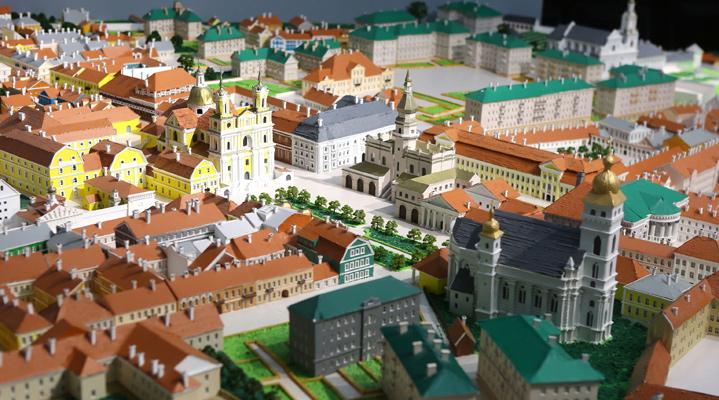
Lonely Planet has named Belarus one of the Top 10 countries to visit in 2019. One of the most popular tourist destinations in Belarus is Grodno. The charming old ‘town of kings’ has the country’s largest ensemble of historical buildings, including two medieval castles. In addition, visitors from dozens of countries do not need visas if they stay in Grodno and the neighboring areas up to 10 days. Our travel guide features Grodno’s most popular tourist attractions.
ARCHITECTURE
Sovetskaya Street
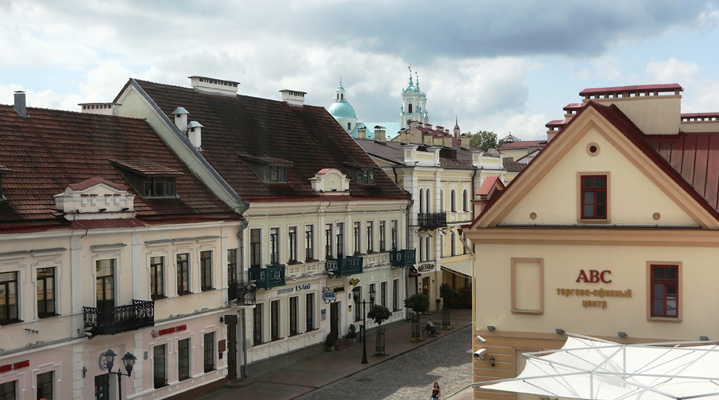 Cars no longer drive on the paving stones laid in 1938. Sovetskaya Street is the main pedestrian street in the city. Throughout the year the street hosts concerts, fairs and street performances. A unique multinational procession takes place here every two summers as Grodno plays host to the Festival of National Cultures featuring various diasporas who demonstrate authentic traditions, offer national dishes, perform folk songs and dances.
Cars no longer drive on the paving stones laid in 1938. Sovetskaya Street is the main pedestrian street in the city. Throughout the year the street hosts concerts, fairs and street performances. A unique multinational procession takes place here every two summers as Grodno plays host to the Festival of National Cultures featuring various diasporas who demonstrate authentic traditions, offer national dishes, perform folk songs and dances.
Old and New Castles
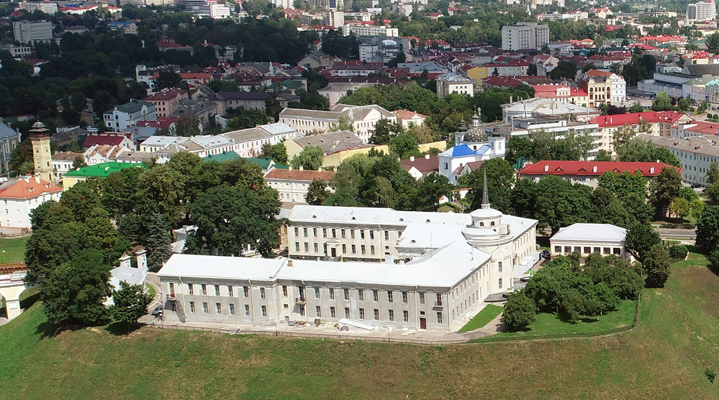 There are two castles (the Old Castle and the New Castle) in the city of princes and kings. In the course of time both buildings lost their original looks as they have been repeatedly destroyed and rebuilt, but today they are still impressive. The castles are part of the museum complex, which narrates the amazingly rich history of the city. Currently, the Old Castle is being restored but it still is open to visitors. Among its exhibits you can see the layout of the castle – a Gothic fortress as it once was during the time of the legendary Prince Vitaut.
There are two castles (the Old Castle and the New Castle) in the city of princes and kings. In the course of time both buildings lost their original looks as they have been repeatedly destroyed and rebuilt, but today they are still impressive. The castles are part of the museum complex, which narrates the amazingly rich history of the city. Currently, the Old Castle is being restored but it still is open to visitors. Among its exhibits you can see the layout of the castle – a Gothic fortress as it once was during the time of the legendary Prince Vitaut.
Observation platform
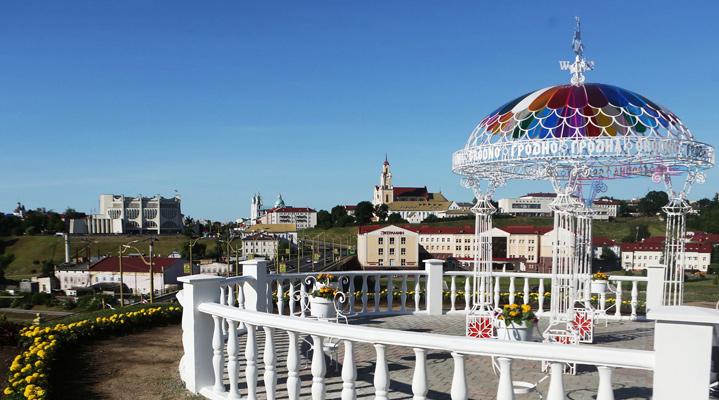 You can admire the historic center of Grodno from the left bank of the Neman River: there is a special observation platform equipped with comfortable benches, observation binoculars and a beautiful rotunda. The bright roof of the building is made in the form of a flower - a symbol of the Festival of National Cultures.
You can admire the historic center of Grodno from the left bank of the Neman River: there is a special observation platform equipped with comfortable benches, observation binoculars and a beautiful rotunda. The bright roof of the building is made in the form of a flower - a symbol of the Festival of National Cultures.
Palace of Grodno Vice Governor Konstantin Maksimovich
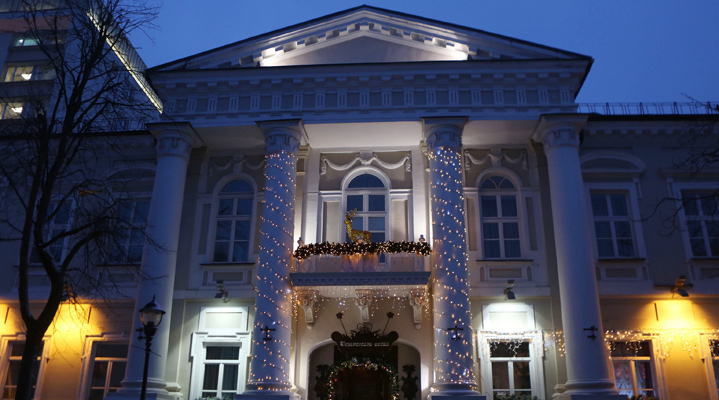 During the Patriotic War of 1812, this fine specimen of Classical architecture fascinated King of Westphalia Jerome-Napoleon Bonaparte, the youngest brother of Napoleon I. Therefore, instead of fighting on a battlefield he chose to indulge in balls and receptions in the palace. For his love for entertainment Jerome-Napoleon Bonaparte was dubbed King Eryoma. The former palace of the vice governor has been hosting the Grodno Oblast Executive Committee for many decades already.
During the Patriotic War of 1812, this fine specimen of Classical architecture fascinated King of Westphalia Jerome-Napoleon Bonaparte, the youngest brother of Napoleon I. Therefore, instead of fighting on a battlefield he chose to indulge in balls and receptions in the palace. For his love for entertainment Jerome-Napoleon Bonaparte was dubbed King Eryoma. The former palace of the vice governor has been hosting the Grodno Oblast Executive Committee for many decades already.
Water towers Kasya and Basya
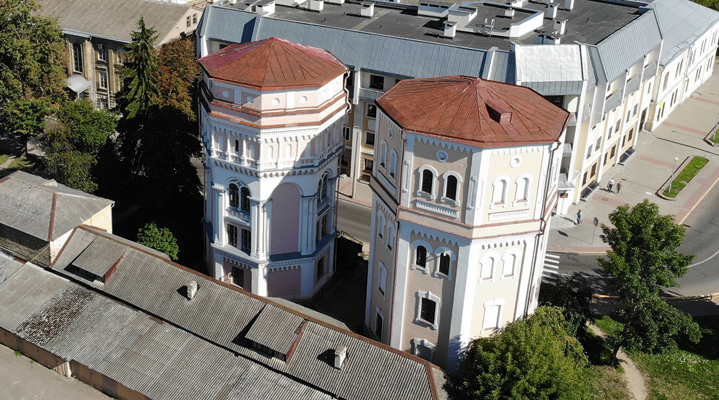 Another must-do thing in Grodno is to see the highest place of the ‘old town’ quarter and to try to find out why the two water towers located there are called Kasya and Basya. These twin-towers now house workshops of local artists.
Another must-do thing in Grodno is to see the highest place of the ‘old town’ quarter and to try to find out why the two water towers located there are called Kasya and Basya. These twin-towers now house workshops of local artists.
Lehmhaus
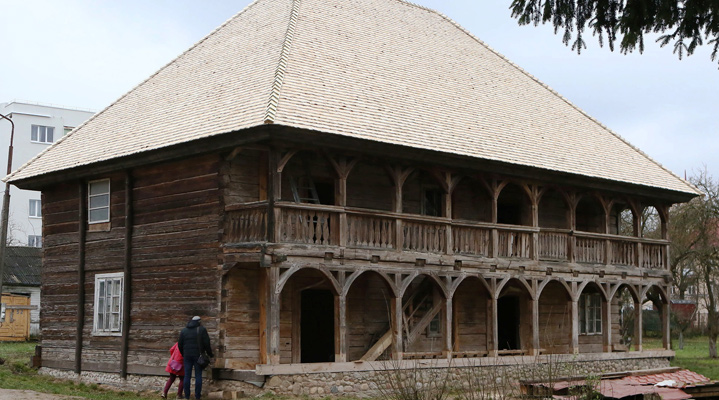 The Lehmhaus (Germ.) is Belarus’ oldest wooden building. It is located on the premises of the Bridgettine Convent. It used to be an auxiliary building and accommodation for nuns. The architectural design of this late Baroque building with laced arcs and two-storied gallery is really impressive. It was initially built without a single nail or a clamp.
The Lehmhaus (Germ.) is Belarus’ oldest wooden building. It is located on the premises of the Bridgettine Convent. It used to be an auxiliary building and accommodation for nuns. The architectural design of this late Baroque building with laced arcs and two-storied gallery is really impressive. It was initially built without a single nail or a clamp.
CULTURAL ACTIVITIES
Museum of Everyday Life and Grodno History
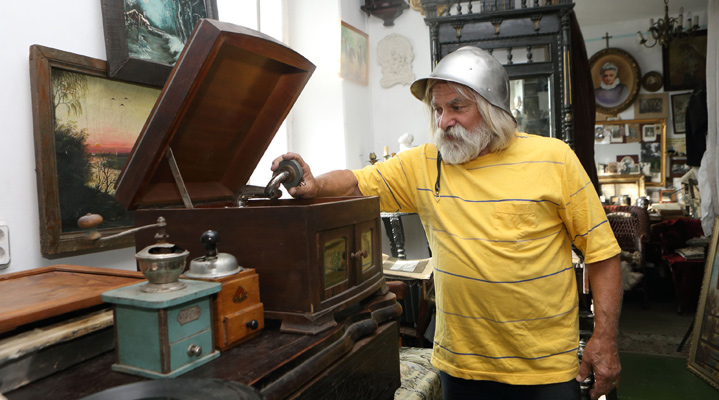 Visitors to the authentic Museum of Everyday Life and Grodno History can see, hear and, most importantly, touch household items of the Polish and Soviet period. Janusz Parulis, an enthusiastic collector (his exposition features over 40,000 items) whose ancestors settled down in Grodno a long time ago will be glad to share the history behind his most unusual acquisitions. However, to book an excursion, tourists are asked to contact the museum owner in advance.
Visitors to the authentic Museum of Everyday Life and Grodno History can see, hear and, most importantly, touch household items of the Polish and Soviet period. Janusz Parulis, an enthusiastic collector (his exposition features over 40,000 items) whose ancestors settled down in Grodno a long time ago will be glad to share the history behind his most unusual acquisitions. However, to book an excursion, tourists are asked to contact the museum owner in advance.
Grodno Prison Museum
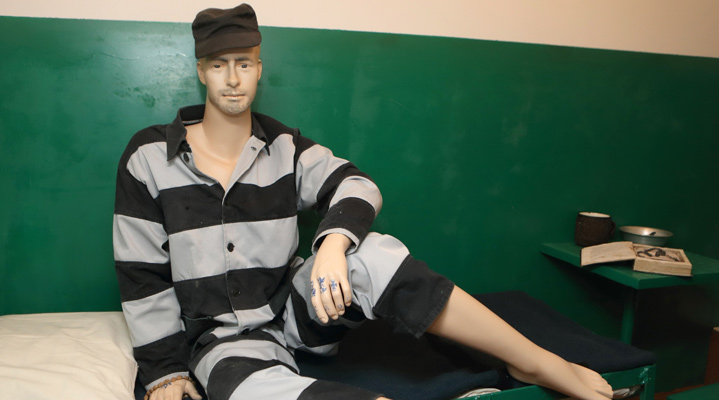 This museum will tell you about the most famous inmates of the Grodno prison, like Napoleon Orda, Felix Dzerzhinsky, Valentin Tavlai, Pilip Pestrak and Wolf Messing. The museum is a showcase of the prison atmosphere with carefully reconstructed prison cells and items, like chains, legcuffs, branding irons, instruments for punishment, photos, and personal belongings of inmates. This museum will certainly stay in your memory for long! Prior registration is needed.
This museum will tell you about the most famous inmates of the Grodno prison, like Napoleon Orda, Felix Dzerzhinsky, Valentin Tavlai, Pilip Pestrak and Wolf Messing. The museum is a showcase of the prison atmosphere with carefully reconstructed prison cells and items, like chains, legcuffs, branding irons, instruments for punishment, photos, and personal belongings of inmates. This museum will certainly stay in your memory for long! Prior registration is needed.
Apart from that, Grodno is home to a number of other captivating places:
-
House Museum of Eliza Orzeszkowa, a writer and public figure revered by Poles and Belarusians;
-
Palace of the Khreptovichs, a fine specimen of architecture of the 18th century, which houses Belarus’ only Museum of History of Religion;
-
Museum of Scents: an exposition of wonderworking herbs and plants collected by workers of the Grodno Ecology And Biology Center;
-
Museum located in an actual drugstore, which is over 300 years old;
-
Fire-Fighting Service History Museum (with an observation platform on a lookout tower).
CITY LANDSCAPES
River taxi along the Neman River
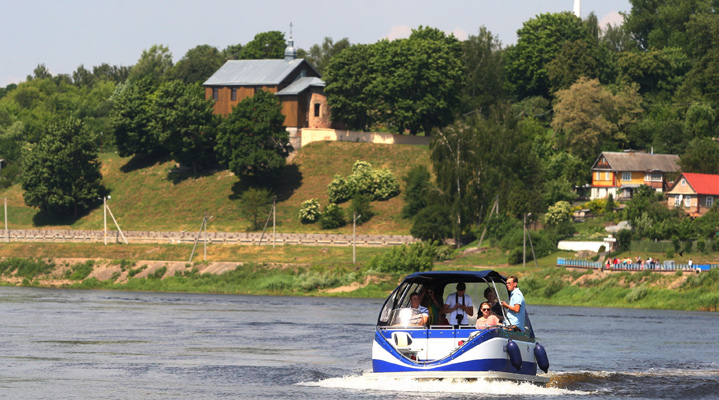 One can go on a "cruise" along the Neman River in Grodno. A river taxi is a small boat able to carry up to 15 passengers. Such taxis became available in the city in the summer of 2018. The guides are intent on expanding the network of sightseeing tours and carrying tourists from Grodno to the Augustow Canal and to Druskininkai.
One can go on a "cruise" along the Neman River in Grodno. A river taxi is a small boat able to carry up to 15 passengers. Such taxis became available in the city in the summer of 2018. The guides are intent on expanding the network of sightseeing tours and carrying tourists from Grodno to the Augustow Canal and to Druskininkai.
Gilibert Park
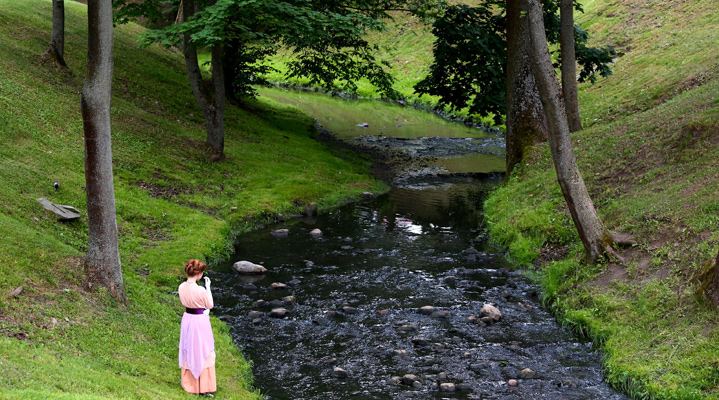 The beautiful park in the city center was named in honor of the famous doctor, botanist, biologist, and enlightener of his time Jean-Emmanuel Gilibert. He was born in Lyon, France in 1741. Upon the invitation of Antoni Tyzenhaus, Grodno senior royal administrative official, he settled down in Grodno and did a lot for the city. Thanks to Jean-Emmanuel Gilibert the country’s first medical academy was established as well as one of Europe’s best botanical gardens. The garden’s collection used to have over 2,000 varieties of plants. Today the place is called Grodno Switzerland due to the local winding rivulets and hilly landscapes.
The beautiful park in the city center was named in honor of the famous doctor, botanist, biologist, and enlightener of his time Jean-Emmanuel Gilibert. He was born in Lyon, France in 1741. Upon the invitation of Antoni Tyzenhaus, Grodno senior royal administrative official, he settled down in Grodno and did a lot for the city. Thanks to Jean-Emmanuel Gilibert the country’s first medical academy was established as well as one of Europe’s best botanical gardens. The garden’s collection used to have over 2,000 varieties of plants. Today the place is called Grodno Switzerland due to the local winding rivulets and hilly landscapes.
Augustow Canal
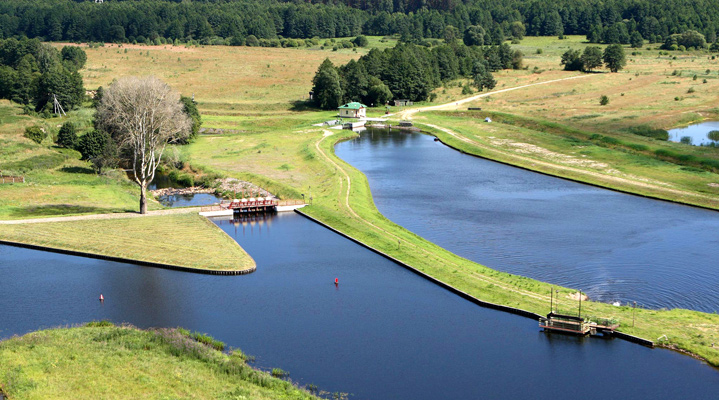 Grodno neighborhood is home to Europe’s most famous artificial waterway – the Augustow Canal. In the 19th century, the hydraulic engineering installation enabled access to the Baltic Sea and the Black Sea. Today it is one of the main places of interest in Grodno Oblast. The traditional Festival of the Sea which dates back to Stephen Bathory was revived at the canal. Besides, tourists are offered various hiking and cycling tours, kayaking, boat and motor boat trips.
Grodno neighborhood is home to Europe’s most famous artificial waterway – the Augustow Canal. In the 19th century, the hydraulic engineering installation enabled access to the Baltic Sea and the Black Sea. Today it is one of the main places of interest in Grodno Oblast. The traditional Festival of the Sea which dates back to Stephen Bathory was revived at the canal. Besides, tourists are offered various hiking and cycling tours, kayaking, boat and motor boat trips.
RELIGION
St. Francis Xavier Cathedral
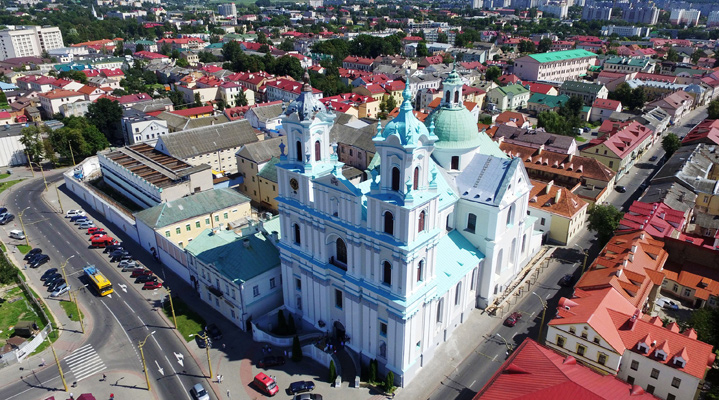 An architectural gem and the main Roman Catholic church of Grodno – St. Francis Xavier Cathedral, known as the Farny Cathedral (that is ‘main, parochial’). The cathedral is one of the three minor basilicas in Belarus. It impresses with its ornamentation: 21-meter high carved altar decorated with figures and one of the oldest working tower clocks in Western Europe.
An architectural gem and the main Roman Catholic church of Grodno – St. Francis Xavier Cathedral, known as the Farny Cathedral (that is ‘main, parochial’). The cathedral is one of the three minor basilicas in Belarus. It impresses with its ornamentation: 21-meter high carved altar decorated with figures and one of the oldest working tower clocks in Western Europe.
Sts Boris and Gleb Church (Kalozha Church)
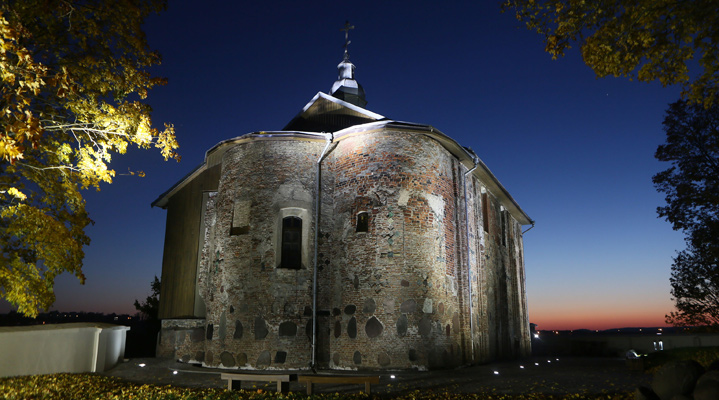 This 12th century Orthodox church in the name of Sts Boris and Gleb was built in the Kolozhan District (‘a place overflowing with spring wells’). Nowadays it is one of the oldest functioning temples in Belarus. The cathedral is famous for its acoustics due to ceramic vase-like indentations built into the walls. The Kalozha Church gave its name to the international festival of Orthodox singing Kolozhsky Blagovest which gathers Orthodox church choirs in Grodno every year.
This 12th century Orthodox church in the name of Sts Boris and Gleb was built in the Kolozhan District (‘a place overflowing with spring wells’). Nowadays it is one of the oldest functioning temples in Belarus. The cathedral is famous for its acoustics due to ceramic vase-like indentations built into the walls. The Kalozha Church gave its name to the international festival of Orthodox singing Kolozhsky Blagovest which gathers Orthodox church choirs in Grodno every year.
St. John Lutheran Church
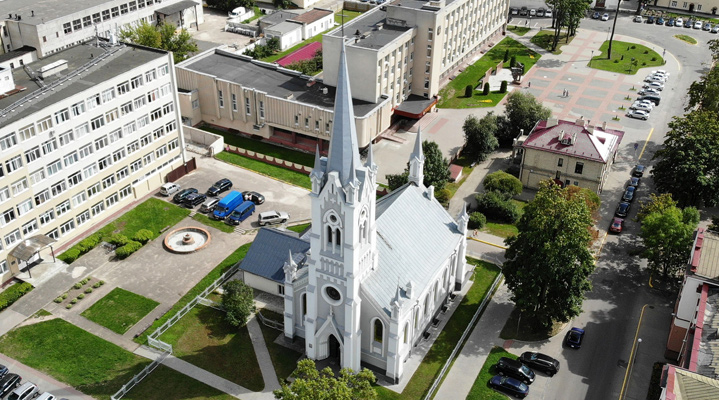 The construction of the church was funded by the local German community in the middle of the 19th century. Today it is the only functioning Lutheran church in Belarus.
The construction of the church was funded by the local German community in the middle of the 19th century. Today it is the only functioning Lutheran church in Belarus.
Bernardine Church and Monastery
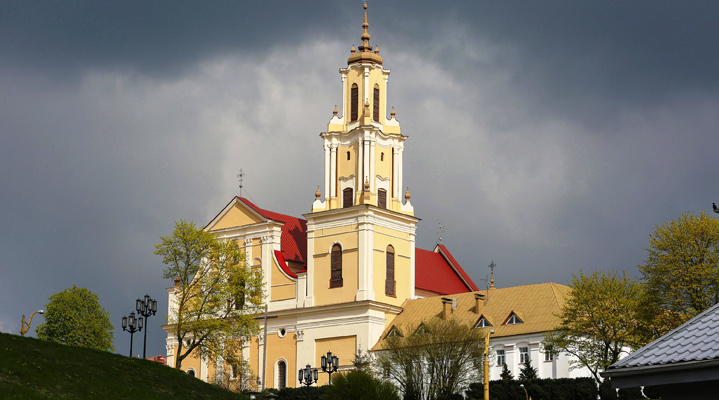 An urban legend says that there are underground passages dug by Bernardine monks and nuns under the church. Its architecture strikes with a combination of three styles - Baroque, Gothic and Renaissance. Famous writer Eliza Orzeszkowa tied the knot with nobleman Piotr in this church.
An urban legend says that there are underground passages dug by Bernardine monks and nuns under the church. Its architecture strikes with a combination of three styles - Baroque, Gothic and Renaissance. Famous writer Eliza Orzeszkowa tied the knot with nobleman Piotr in this church.
Holy Intercession Cathedral
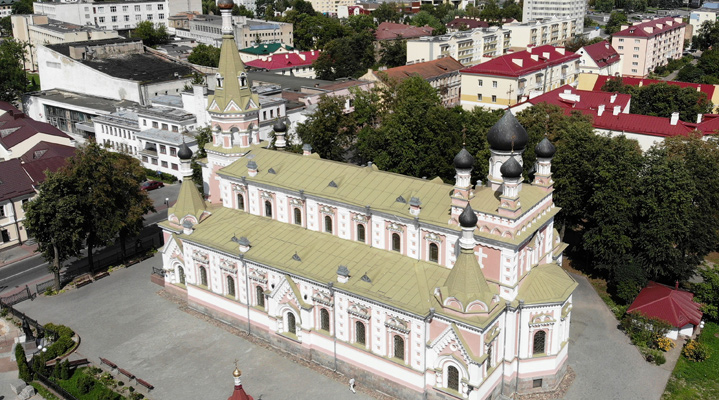 The cathedral was built in the retrospective-Russian style in the early 20th century. Unlike many other religious structures of Grodno, it never stopped functioning, either during the German occupation or during the years of Soviet persecution of the church.
The cathedral was built in the retrospective-Russian style in the early 20th century. Unlike many other religious structures of Grodno, it never stopped functioning, either during the German occupation or during the years of Soviet persecution of the church.
Great Choral Synagogue
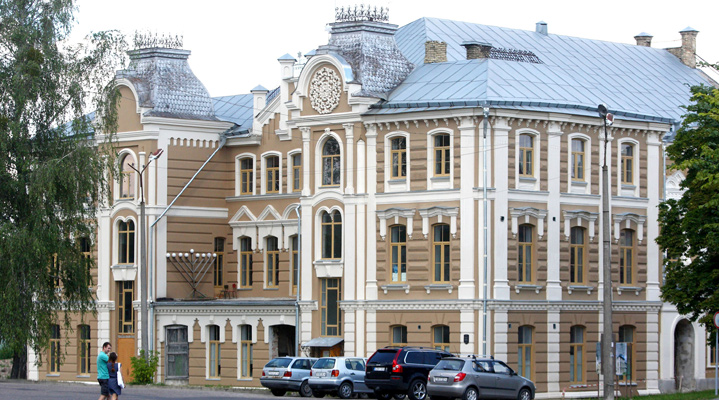 Grodno's Great Choral Synagogue is one of the oldest in Europe. During the Great Patriotic War local Jews were brought here for temporary detention before being sent to concentration camps. Today, the synagogue also houses a Jewish museum.
Grodno's Great Choral Synagogue is one of the oldest in Europe. During the Great Patriotic War local Jews were brought here for temporary detention before being sent to concentration camps. Today, the synagogue also houses a Jewish museum.


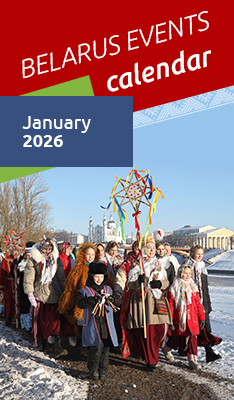




 print version
print version make home page
make home page add to bookmarks
add to bookmarks
